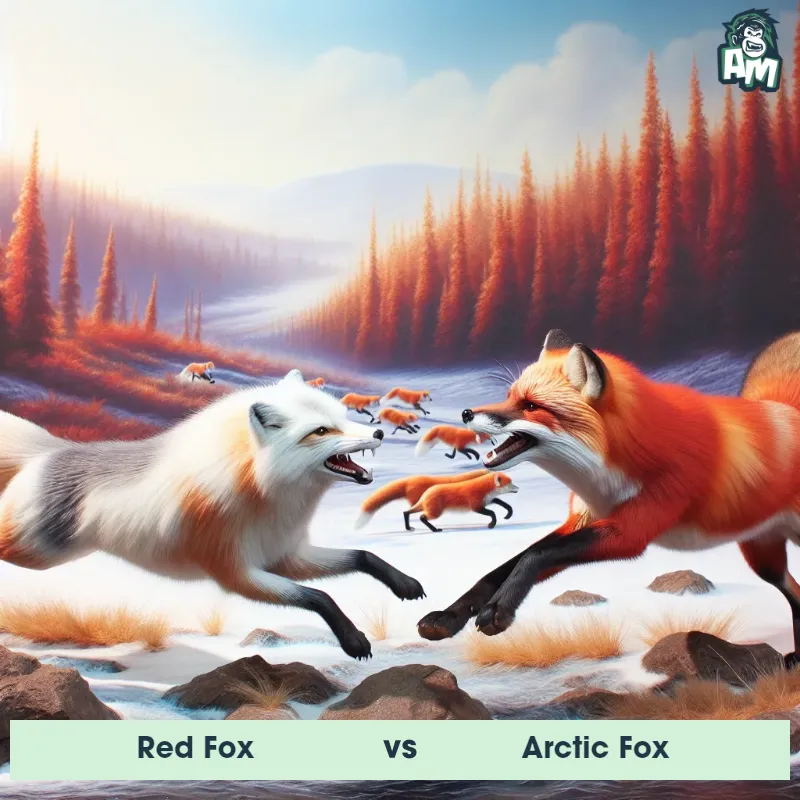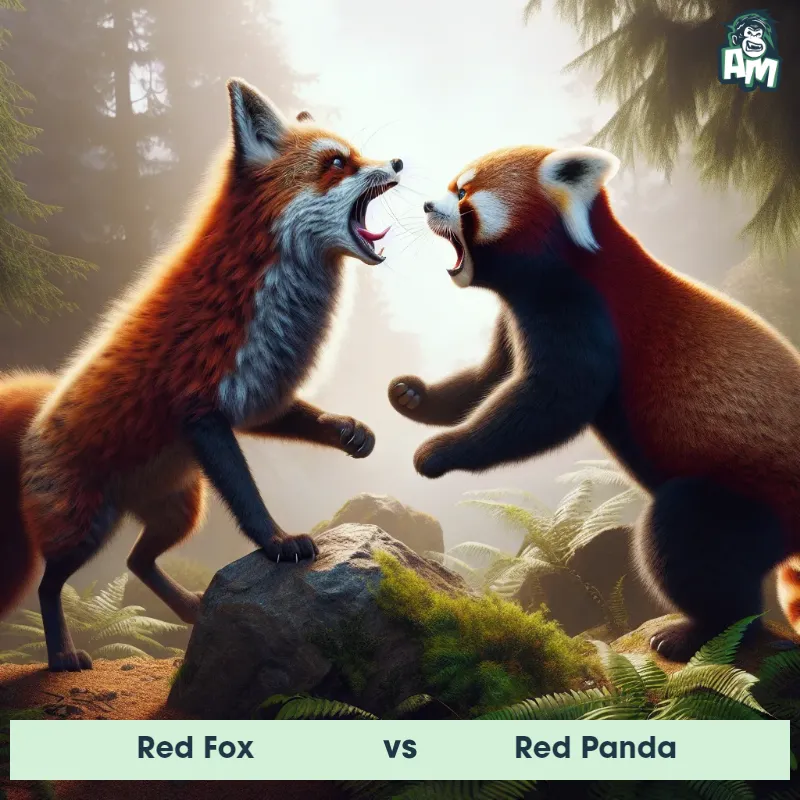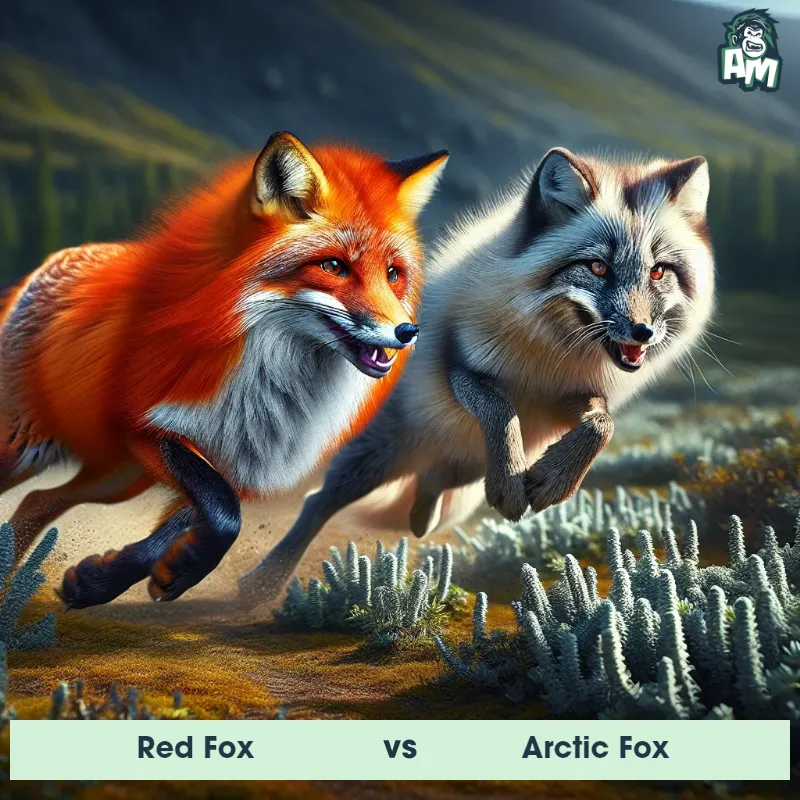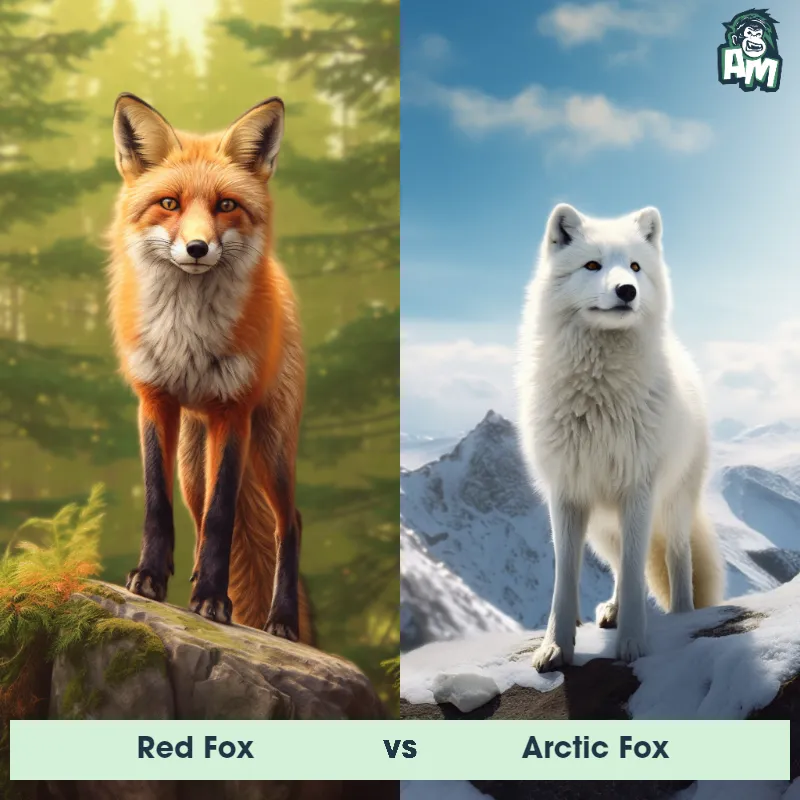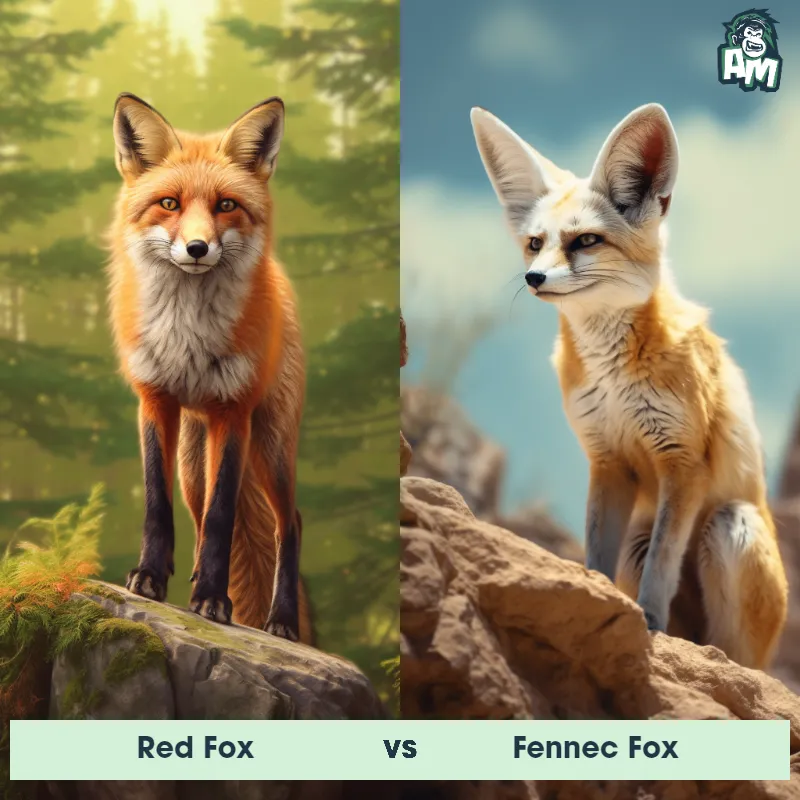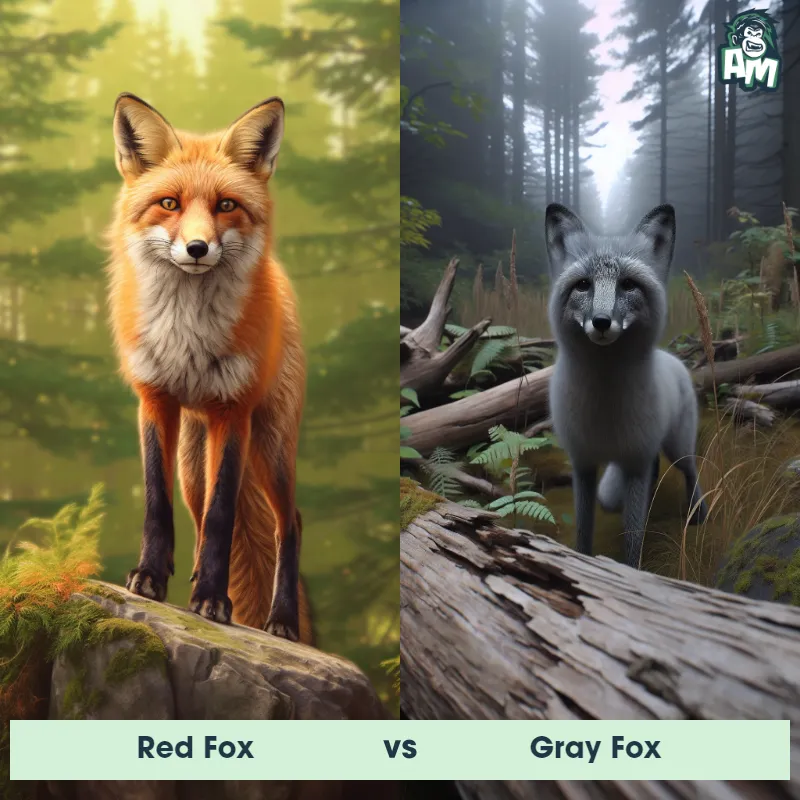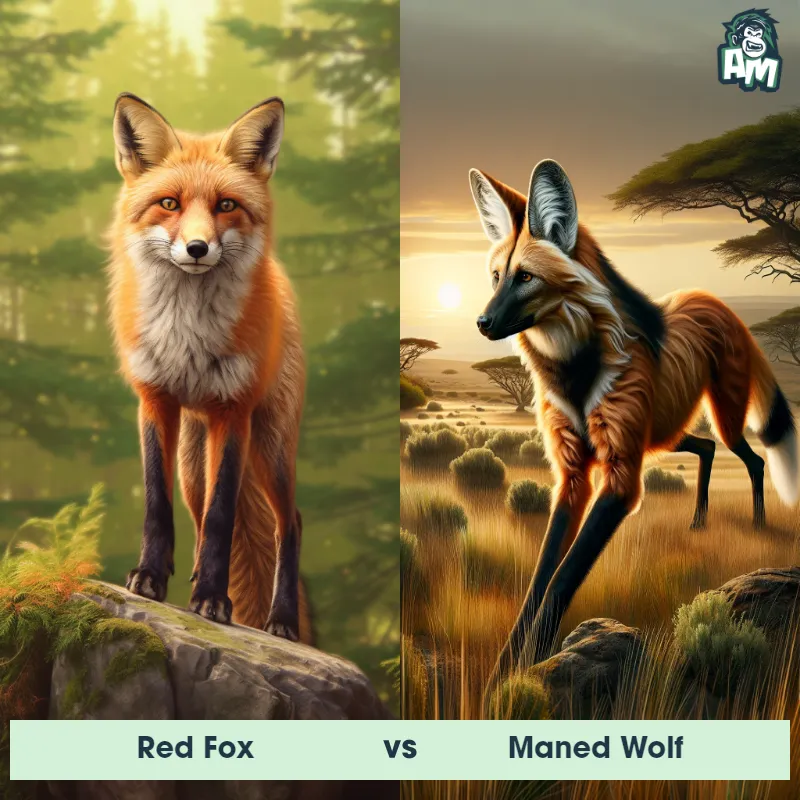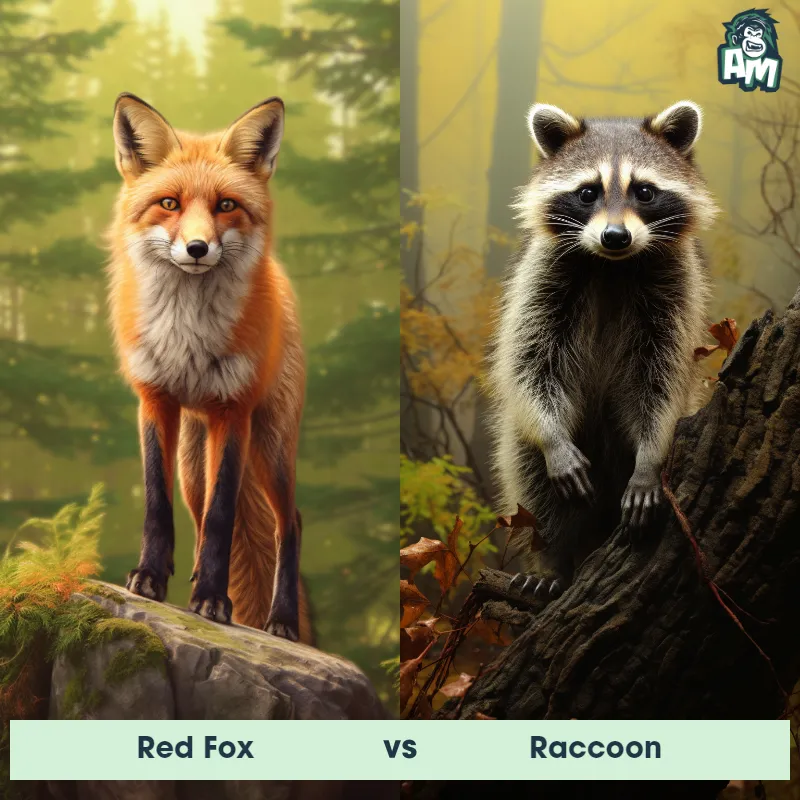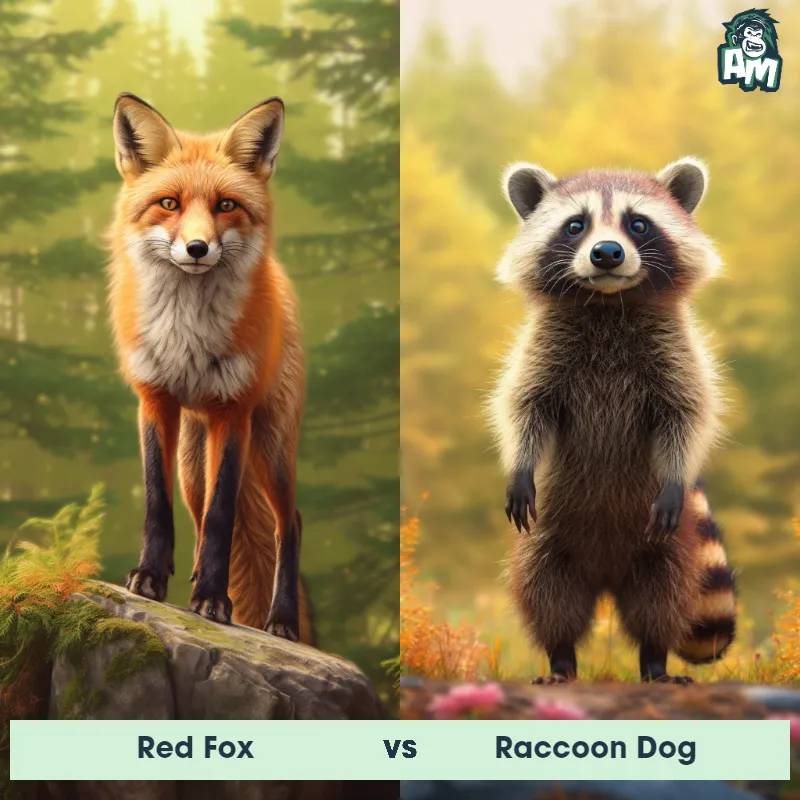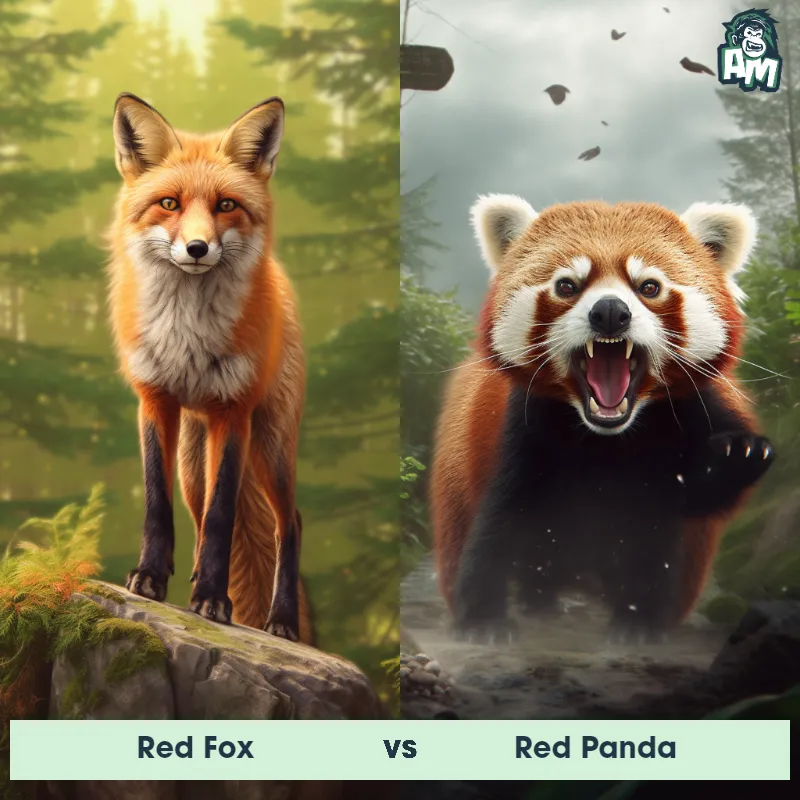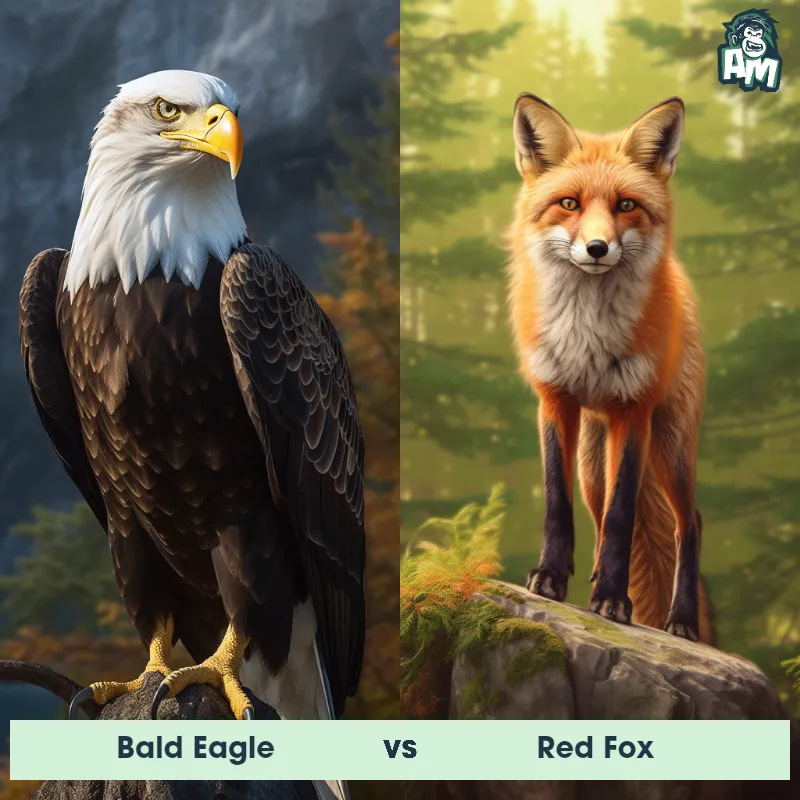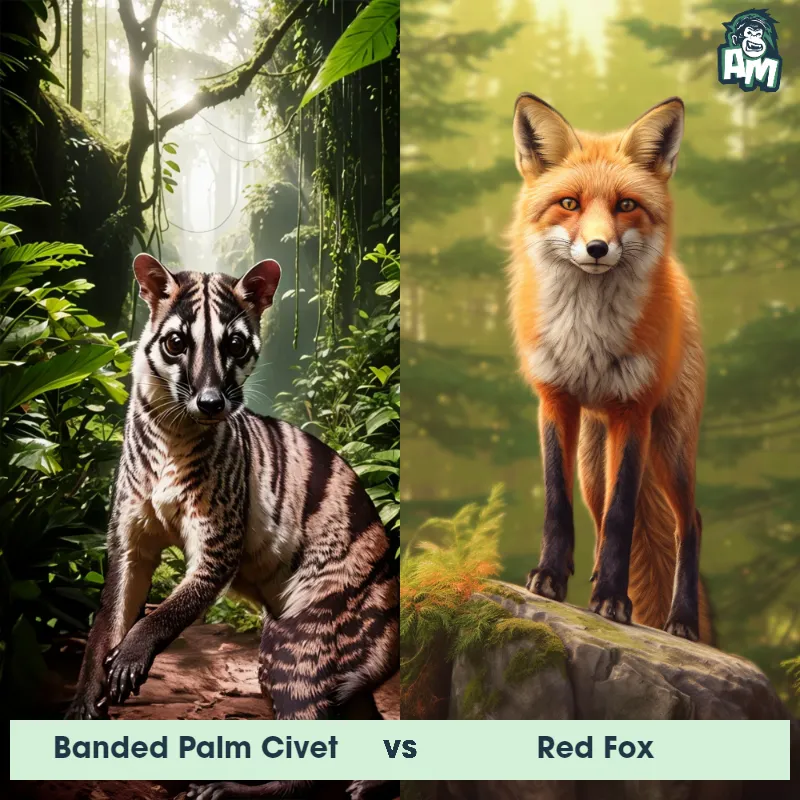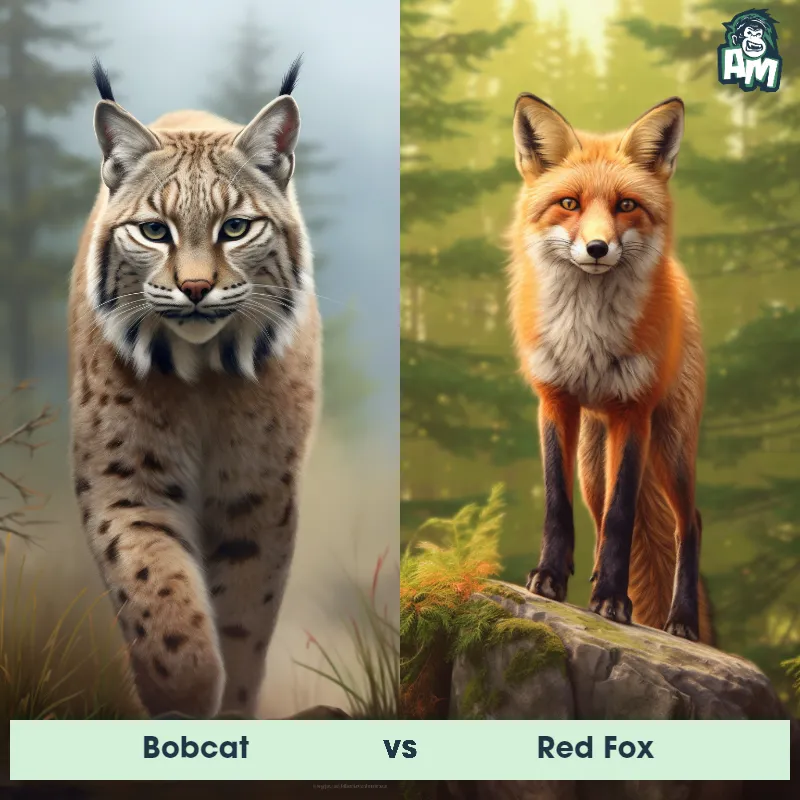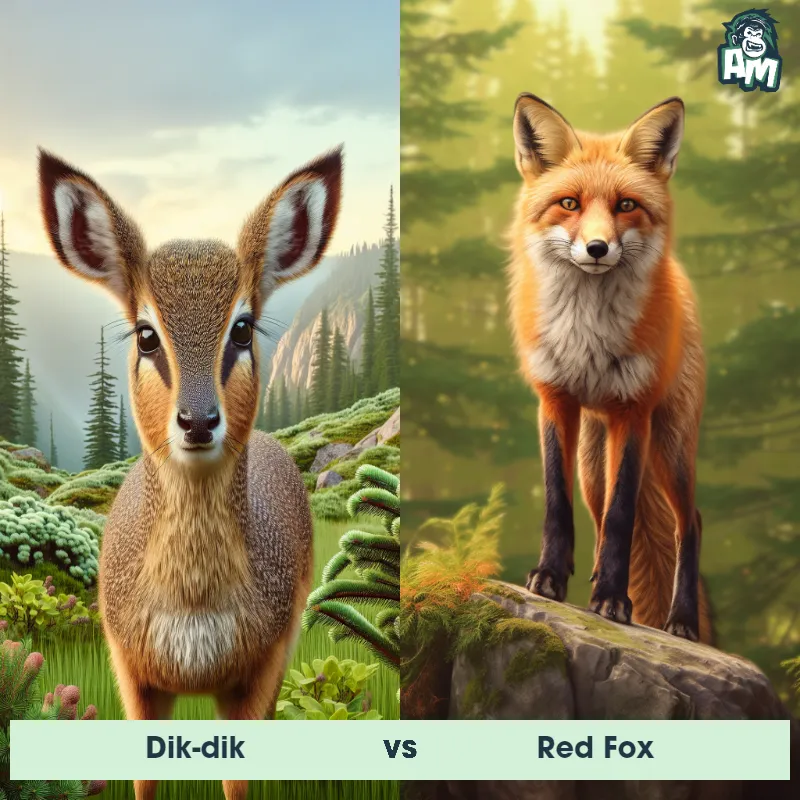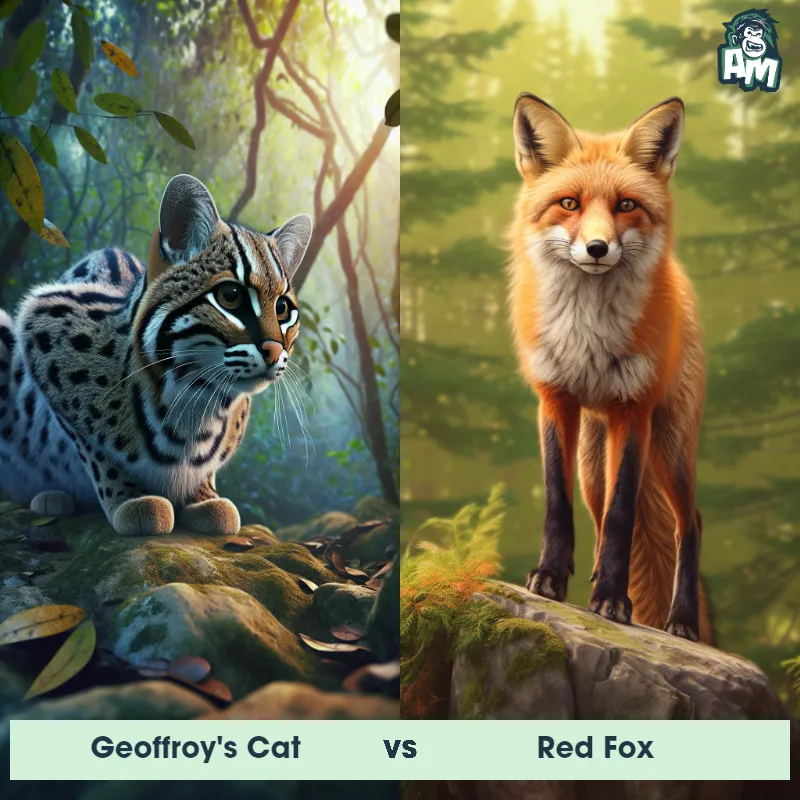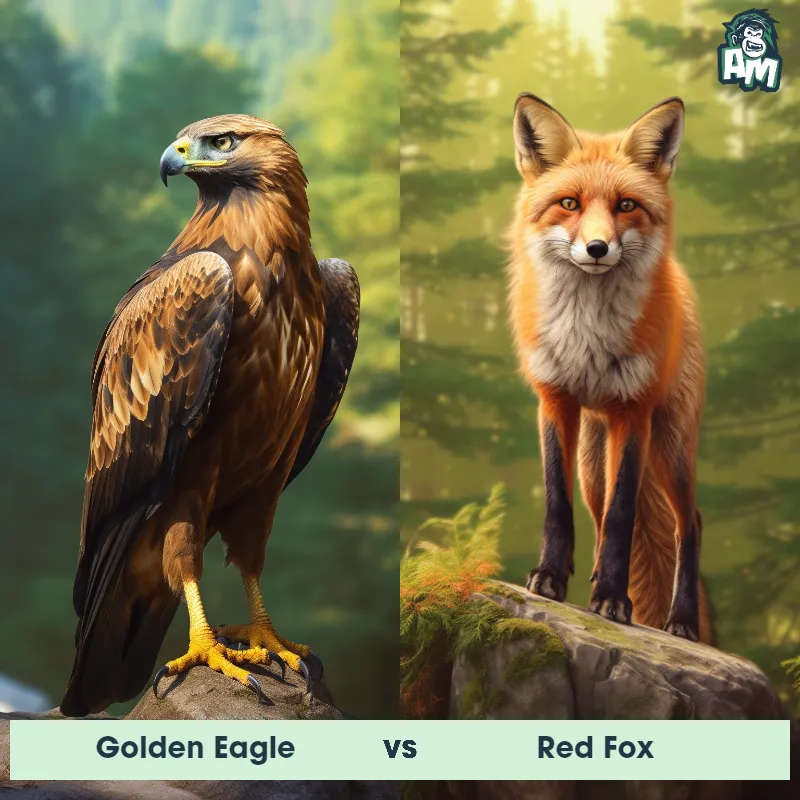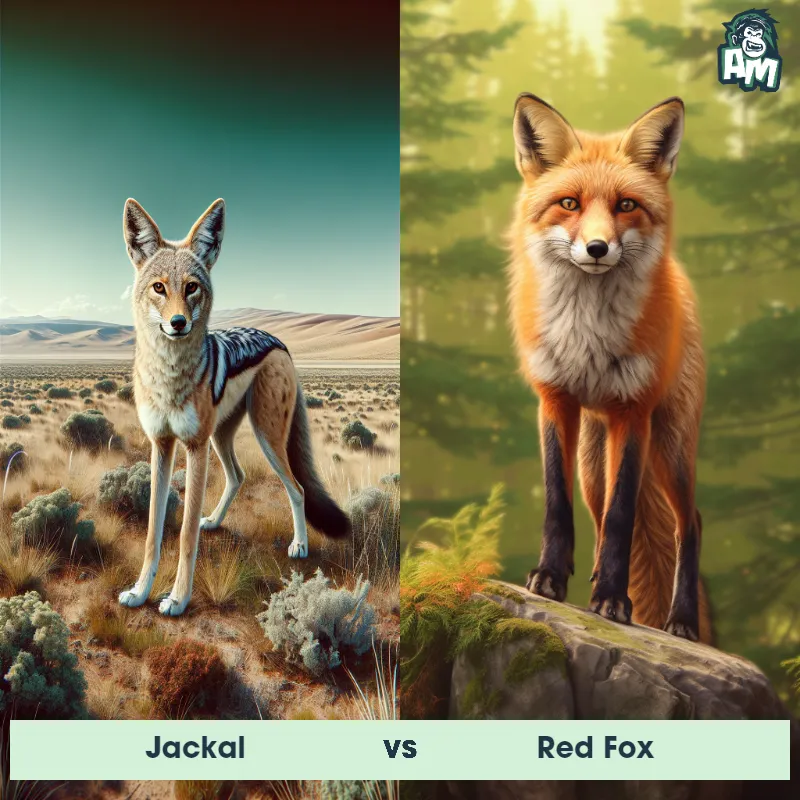The Red Fox
The Red Fox, also known as Vulpes vulpes, is a medium-sized mammal belonging to the Canidae family. It is characterized by its distinct rusty-red fur, which acts as excellent camouflage in forested areas. Red Foxes have a slender body with long, bushy tails that help them maintain balance while running. They have a pointed snout, erect ears, and sharp, penetrating eyes. These highly adaptable animals can be found in a variety of habitats, including forests, grasslands, and even urban areas. They are known for their intelligence, cunning, and ability to adapt to different environments.
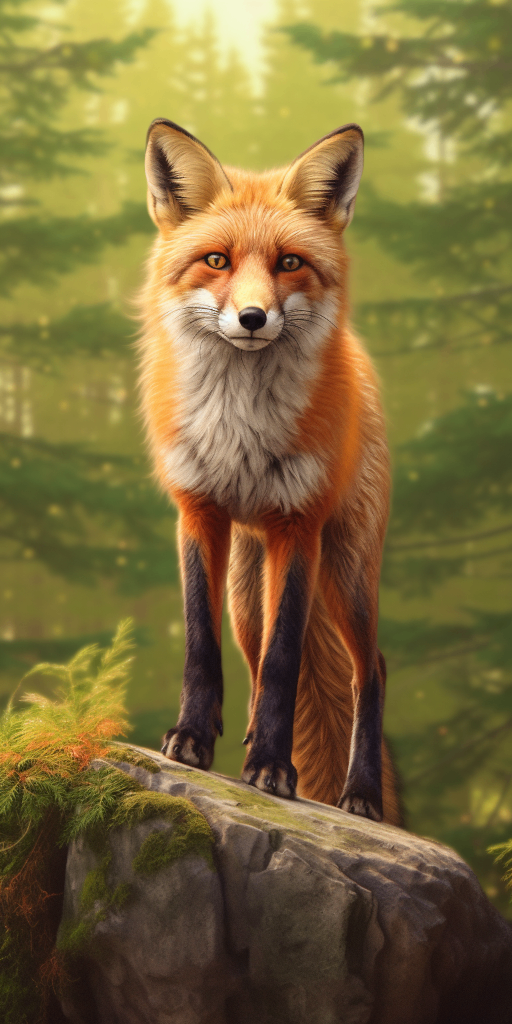
| Red Fox | |
|---|---|
| Size | 14-20 inches (35-50 cm) at the shoulder |
| Weight | 6.5-15 pounds (3-6.8 kg) |
| Speed | Speed: 45 mph (72.4 km/hr) |
| Key Strength | Speed and agility |
| Biggest Weakness | Lack of physical strength |
| Scientific Name | Vulpes vulpes |
| Family | Canidae |
| Habitat | Forests, grasslands, and urban areas |
| Geography | North America, Europe, Asia, and Africa |
| Diet | Omnivorous, eats small mammals, birds, insects, fruits, and vegetables |
| Lifespan | 2 years - 5 years |

The Red Fox
The Red Fox, also known as Vulpes vulpes, is a medium-sized mammal belonging to the Canidae family. It is characterized by its distinct rusty-red fur, which acts as excellent camouflage in forested areas. Red Foxes have a slender body with long, bushy tails that help them maintain balance while running. They have a pointed snout, erect ears, and sharp, penetrating eyes. These highly adaptable animals can be found in a variety of habitats, including forests, grasslands, and even urban areas. They are known for their intelligence, cunning, and ability to adapt to different environments.
Fun Fact: Red Foxes are known for their excellent hearing abilities and have evolved to locate the exact position of their prey, such as small mammals, birds, and insects, using their incredibly sensitive ears, which can rotate independently by up to 150 degrees.
| Red Fox | |
|---|---|
| Size | 14-20 inches (35-50 cm) at the shoulder |
| Weight | 6.5-15 pounds (3-6.8 kg) |
| Speed | Speed: 45 mph (72.4 km/hr) |
| Key Strength | Speed and agility |
| Biggest Weakness | Lack of physical strength |
| Scientific Name | Vulpes vulpes |
| Family | Canidae |
| Habitat | Forests, grasslands, and urban areas |
| Geography | North America, Europe, Asia, and Africa |
| Diet | Omnivorous, eats small mammals, birds, insects, fruits, and vegetables |
| Lifespan | 2 years - 5 years |
Match Highlights
Red Fox Matchups
We use AI to simulate matchups between the Red Fox and other animals. Our simulation considers size, strength, and natural predatory behaviors to determine the most likely outcome.

Can't find the Matchup you want?
Create Your Own MatchupRed Fox: Diet, Predators, Aggression, and Defensive Behaviors
What do Red Foxes eat?
Red Foxes are omnivores, meaning they have a varied diet that includes small mammals like rodents, rabbits, and birds, as well as insects, fruits, and vegetables. They are opportunistic feeders, so they will also scavenge for food and may even hunt larger prey like deer fawns or lambs if given the opportunity.
Do Red Foxes have any predators?
Yes, Red Foxes have several predators, including larger carnivores like coyotes, wolves, and mountain lions. Birds of prey such as eagles and owls may also target young or injured foxes. Red Foxes are most vulnerable when they are young and inexperienced, making them easy targets for predators.
Are Red Foxes aggressive?
While Red Foxes are generally not aggressive towards humans, they can display aggressive behavior when defending their territory or young. When threatened, they may growl, snarl, or even bite if provoked. However, they are more likely to flee from potential threats than to engage in a physical altercation.
Do Red Foxes fight?
Red Foxes are known to engage in territorial disputes and competition over food, mates, and den sites. These conflicts can lead to physical fights, where foxes will use their teeth and claws to defend themselves or assert their dominance. Fights between Red Foxes are typically brief and intense, ending once one fox establishes its dominance.
How do Red Foxes defend themselves?
Red Foxes have several defense mechanisms to protect themselves from predators and other threats. They are extremely agile and can run quickly to evade danger. They also have sharp claws and teeth that they can use to defend themselves if necessary. Additionally, Red Foxes have keen senses of hearing and smell, allowing them to detect potential threats from a distance.
What is the Red Fox's biggest weakness in a fight?
Despite their agility and sharp teeth and claws, Red Foxes are relatively small and lightweight compared to some of their predators. This makes them vulnerable in physical confrontations with larger carnivores that have more strength and power. In a fight, a Red Fox's best defense is often to try to escape rather than engage in a prolonged battle.
Fun Fact: Red Foxes have a wide range of vocalizations and can produce various sounds, including high-pitched screams, barks, and howls. These vocalizations serve as communication signals among foxes, helping them establish territory boundaries and locate and communicate with their mates.
Fun Fact: Red Foxes have the ability to adapt their diet based on availability, and their diet can vary widely depending on the region and season, with small mammals and birds being their primary food sources. However, they are known for their scavenging behavior and are opportunistic feeders, sometimes feasting on fruits, vegetables, and even leftover human food.



